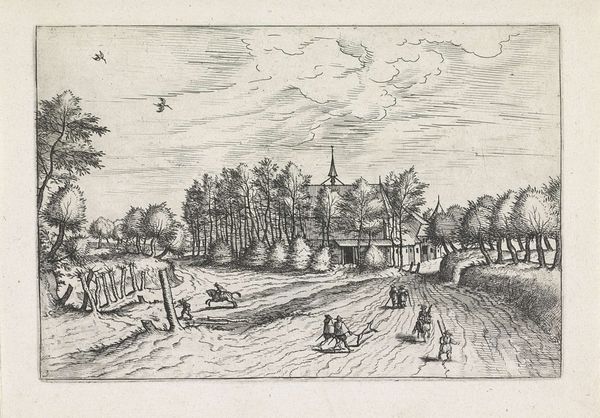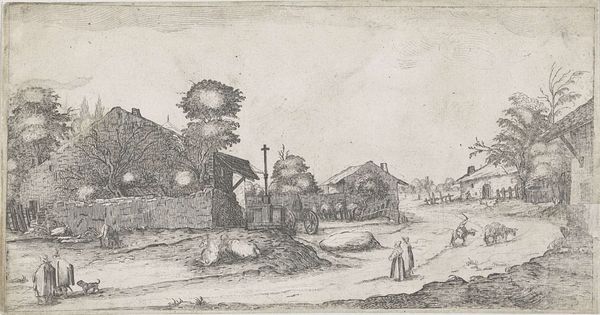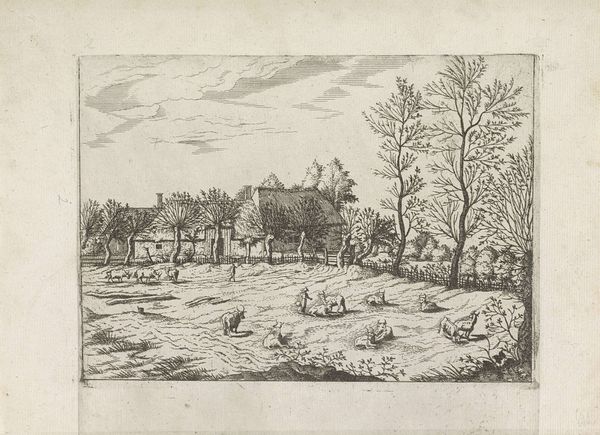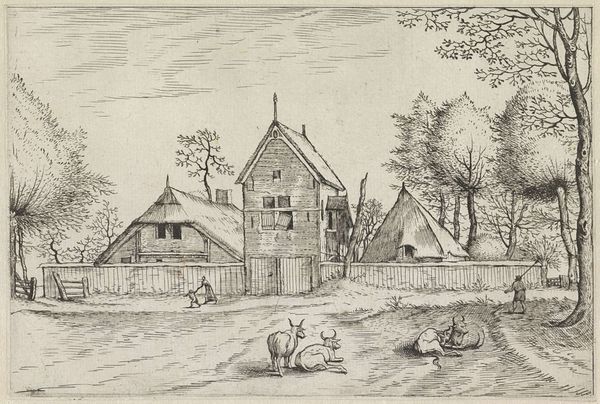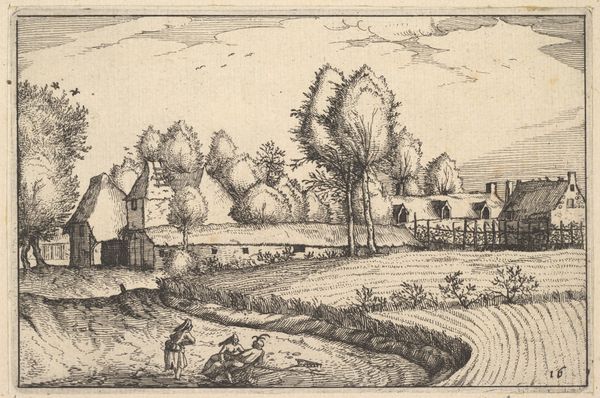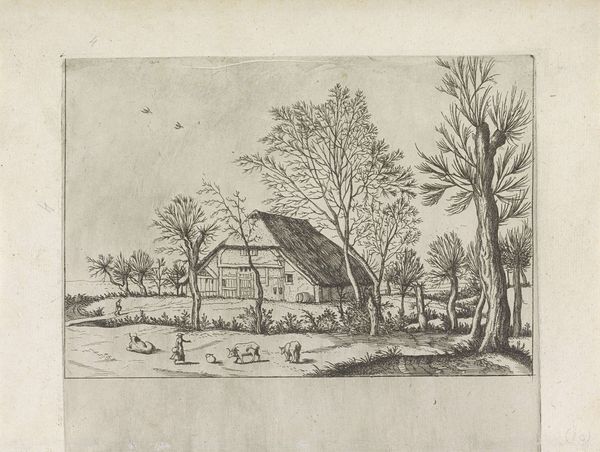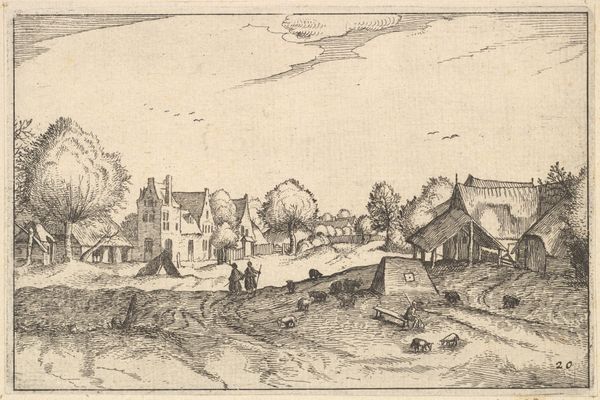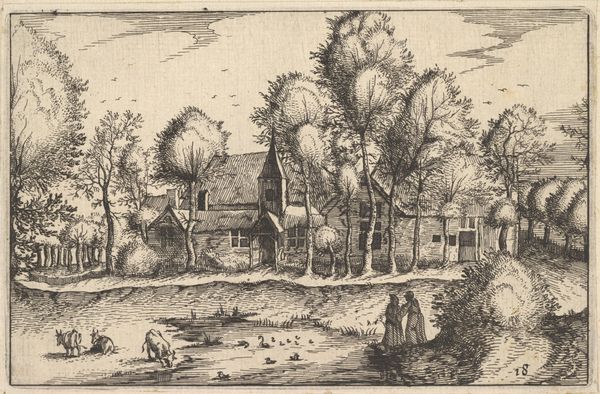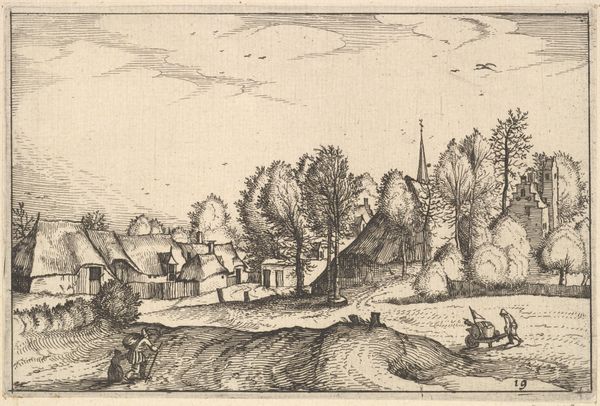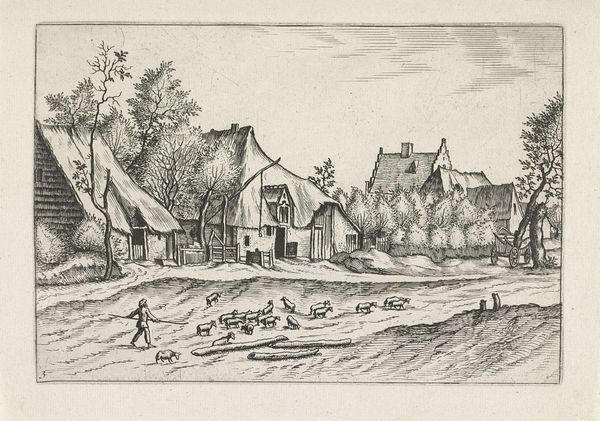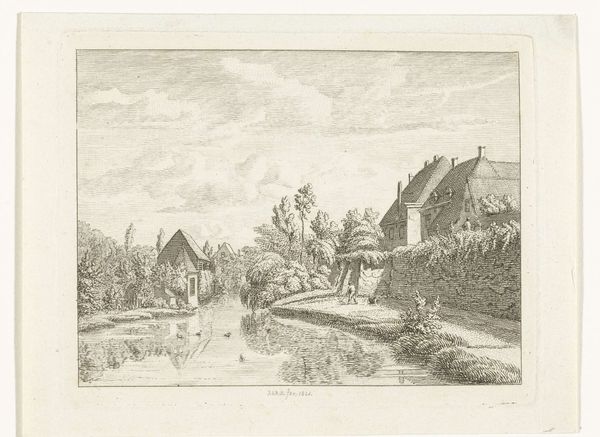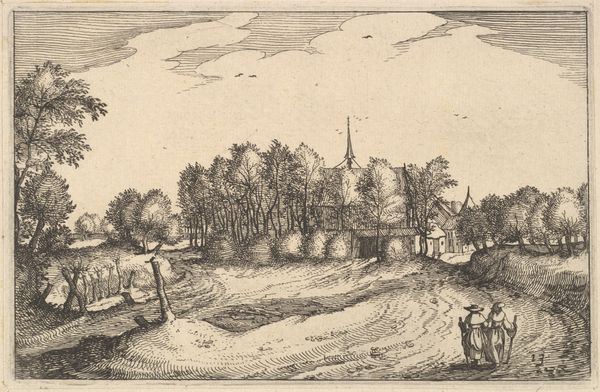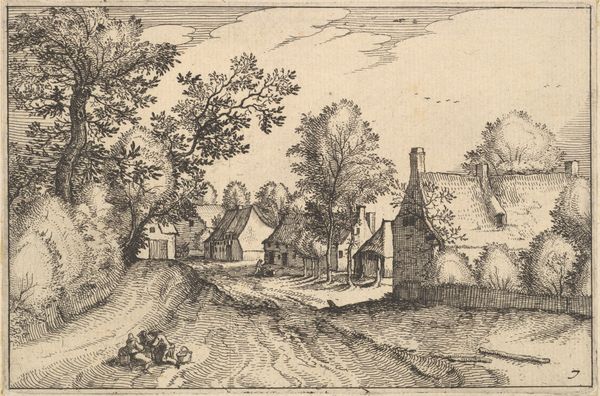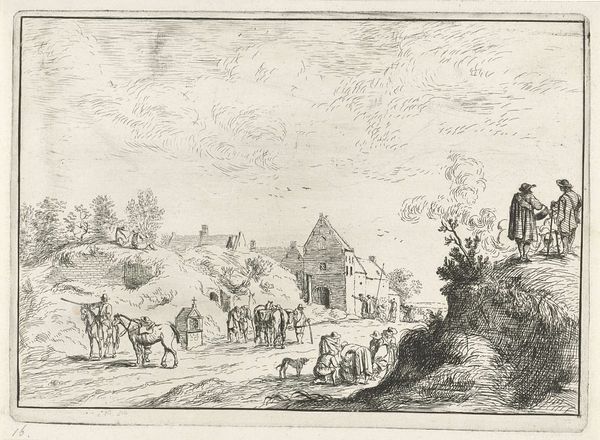
drawing, etching
#
architectural sketch
#
drawing
#
dutch-golden-age
#
etching
#
landscape
#
genre-painting
Dimensions: height 133 mm, width 198 mm
Copyright: Rijks Museum: Open Domain
Curator: Let's turn our attention to "Farmhouses along a Cornfield," an etching attributed to Johannes or Lucas van Doetechum, made before 1633. You can find it here at the Rijksmuseum. Editor: It has a humble simplicity, doesn't it? The thatched roofs and unpretentious landscape are charming in their plainness. And yet, even through the etching technique, it offers some sense of mass and depth. Curator: The prevalence of such scenes speaks volumes about the era. Genre paintings like these captured the essence of everyday life, glorifying the simple existence of rural communities. Note how even birds in the sky feel connected to the toil. Editor: What’s striking is the reliance on etched lines to simulate the tactile quality of a rural environment. This emphasis reveals an interest in depicting labour; you can see individuals busy along the lane, implying production and an emphasis on local existence, especially if one focuses on the medium being an etching which permits for circulation to others, emphasizing and valuing the domestic landscape. Curator: Precisely! The arrangement isn't haphazard; it echoes a sense of order and piety. This evokes archetypal stability and harkens back to older landscape traditions found elsewhere in the Renaissance tradition. One also detects themes associated with a golden age, where genre painting serves as reminder to connect and venerate folk ways, but filtered through a nostalgic, and constructed image of tradition. Editor: Constructed how? Consider that to make this accessible, the artist etched copper. It's an industrialized print removed from lived-experience – for easy consumption in the market place! The very materiality reminds us of its departure from being a simple, honest depiction of farm life. It has been mass-produced. Curator: Interesting. So the imagery then becomes doubly compelling: we see these images as tokens to the past as much as contemporary artifacts in and of themselves. The symbols thus are wrapped into a physical history too. Editor: It's an excellent way to read such imagery. Curator: Thank you; I think seeing that negotiation enriches my understanding considerably.
Comments
No comments
Be the first to comment and join the conversation on the ultimate creative platform.
